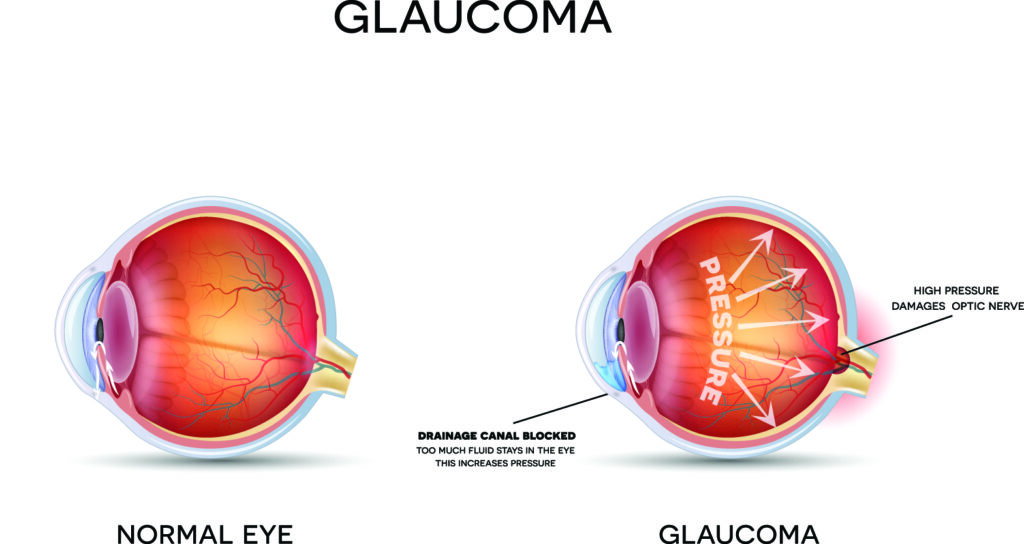Glaucoma Doctors
What is glaucoma?
Glaucoma is an eye disease that damages the optic nerve, which is essential for vision. This damage is often caused by elevated pressure in the eye, known as intraocular pressure (IOP). Over time, increased eye pressure can harm the optic nerve fibers, leading to vision loss or even blindness if untreated. However, some types of glaucoma can occur even with normal eye pressure.

What are the types of glaucoma?
The most common form of glaucoma is known as primary open-angle glaucoma. It develops due to a gradual increase in intraocular pressure, leading to optic nerve damage over time. This type of glaucoma is generally painless and causes a slow decline in peripheral vision.
Another form of glaucoma, called narrow-angle or angle-closure glaucoma, happens when the eye’s drainage channels become blocked, causing fluid to accumulate. This results in a sudden or chronic increase in intraocular pressure, often accompanied by intense pain, blurry vision, and potential vision loss if left untreated. Angle-closure glaucoma is an eye emergency, as it can lead to rapid optic nerve damage.
What symptoms does glaucoma cause?
Glaucoma often has no noticeable symptoms, which is why regular screening exams are crucial to detect any signs of the disease within the eye. Left untreated, glaucoma can gradually impact peripheral vision, and as it progresses, it may eventually affect central vision and even lead to blindness. However, early detection allows for treatment that can slow or potentially halt the progression of vision loss.
Who is at risk for glaucoma?
You may be at increased risk for glaucoma if you:
- Have a family history of glaucoma
- Are especially near or far sighted
- Have a history of eye trauma
- Have higher than normal eye pressures
- Are African or Hispanic in descent
How is glaucoma diagnosed?
There are several components of the eye exam that are checked to aid in the diagnosis of glaucoma. These include your eye (intraocular) pressure, inspection of the drainage angles of the eye, measurement of the corneal thickness, and visual inspection of the optic nerve. Ancillary tests such as peripheral visual field testing and computed tomography of the optic nerve help confirm the diagnosis of glaucoma.

What are the treatments for glaucoma?
There are many treatments available for glaucoma, depending on the type and severity with which you are diagnosed. In general, the goal of any type of treatment is to lower the intraocular pressure and thus minimize damage to the optic nerve.
Drops
Eye drops are the mainstay of glaucoma therapy. They work by either decreasing the production of or increasing the drainage of fluid from the eye. Drops are administered directly into the eyes and thus have very little side effects for the body itself. Sometimes people are put on more than one drop to control their eye pressures.
Glaucoma Lasers
There are multiple types of laser procedures that can be done for glaucoma. For patients with narrow angles, a laser peripheral iridotomy may be recommended to create additional drainage channels for the eye fluid. For patients with open angle glaucoma, a laser treatment called ALT or SLT can be done to reduce the intraocular pressure and possibly the dependence on eye drops.
Glaucoma Surgery
For more advanced cases of glaucoma, special glaucoma surgical procedures may be indicated to try to control the eye pressure. There are also devices that may be implanted at the time of cataract surgery for patients with mild to moderate glaucoma. Your surgeon can discuss these options with you at the time of cataract surgery if that is indicated.


